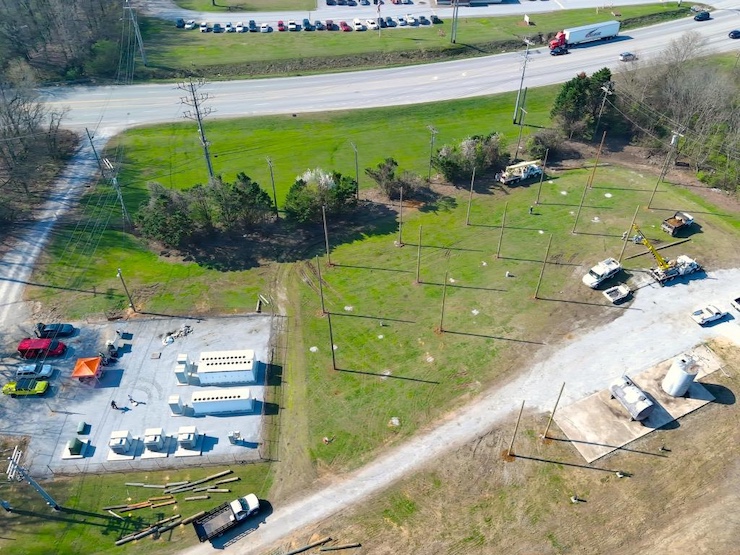ORNL’s Drone Research Transforms Power Line Inspections for Safety and Efficiency

© Jason Richards/ORNL, U.S. Dept. of Energy
Since the dawn of the commercial drone revolution, the Oak Ridge National Laboratory (ORNL) in Tennessee has played a pivotal role in researching drone applications. The United States Department of Energy (DOE) and the Federal Aviation Administration (FAA) tasked ORNL with establishing frameworks for how drones could be used beneficially and safely in the energy industry. As part of the FAA’s ever-evolving Unmanned Aircraft Integration Pilot Program, Richard Lusk, head of ORNL’s UAS Research Center (UASRC) and leader of the lab’s Data System Sciences and Engineering (DSSE) group, and William Monday, UASRC project manager and DSSE member, published a 168-page document titled An Early Survey of Best Practices for the Use of Small Unmanned Aerial Systems by the Electric Utility Industry.
The document, published in February 2017, states in its preface: “This technical manual is about doing things safely. It isn’t so much a how-to guide as it is a collection of best practices from unmanned aerial system (UAS) operators from all over the world. The desired end state is to provide a touchstone for utility businesses, directors, managers, and operators that will inform them as they begin to strategize, plan, and incorporate this technology into day-to-day operations.” The paper goes on to acknowledge that, with the expanding availability of inexpensive and easy-to-use drones, necessary guidelines are needed to ensure the success of the drone industry in the electric utility sector. The document served as a blueprint for the regulations that currently govern drone use.
The paper was just one of many projects ORNL would undertake related to drones in the electric utility sector. In August 2024, Peter Fuhr, head of ORNL’s Grid Communications and Security Group, announced the lab’s most recent findings on using drones to inspect power lines. Working out of ORNL’s Hardin Valley campus in Knox County, Peter leads a group of 17 researchers who have developed an automated drone system to inspect electric grids. Thanks to the guidelines developed at ORNL, power companies worldwide have been using drones to inspect thousands of miles of power lines. With the new developments created by Peter and his team, this process will be safer, more efficient, and more cost-effective.
The team began with an off-the-shelf, inexpensive drone, something any utility company could easily acquire. They then customized the drone’s software and hardware to implement advanced algorithms for autonomy and accuracy. “This is completely novel to the utility world,” Peter said. “No one has put this together as a holistic system before. We’re taking these components and operating them in a very different way, tailoring the math, hardware, and software to the needs of utilities.” The new system works with the DOE’s Grid Event Signature Library (GESL), a live power grid database operated by ORNL. Power lines are equipped with sensors that relay information to the GESL. When a sensor detects atypical power behavior, Peter and his team can pinpoint where to send an inspection team.
Once on-site, the team deploys a drone equipped with sensors that autonomously inspects the lines. The data is analyzed by the algorithms, which then develop an appropriate solution plan, without ever having to risk sending a person up in a bucket truck. ORNL researcher Elizabeth Piersall, who helped design the autonomous drone system, explained that one of the primary goals is to detect active arcing, when currents jump from one line to another. These events are hard to predict and can lead to power outages and wildfires. “We want to understand how to use these sensors to accurately identify active arcing, even when dealing with potentially poor resolution and motor vibration from affordable sensors and drones,” she said.
Peter, Elizabeth, and the rest of the team have been training the drones for these autonomous inspections. They envision a future where power companies can deploy fleets of inexpensive, easy-to-use, and accurate drones to continuously inspect power lines. “This provides a perspective on the information that utility specialists may not have otherwise,” Elizabeth continued. ” We are not just finding a better way to do something that can be done already: We are providing a new capability.” By using drones, the utility industry can ultimately offer better service without unnecessarily putting people at risk. As Richard and William state in the beginning of their document: “Let’s risk the machines, not the humans.”
|